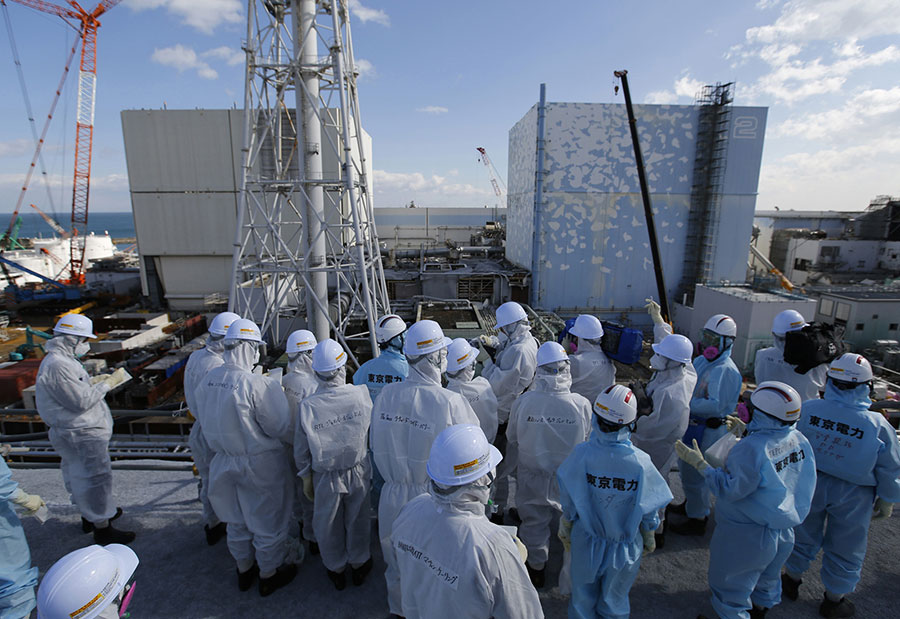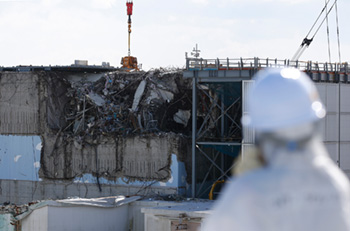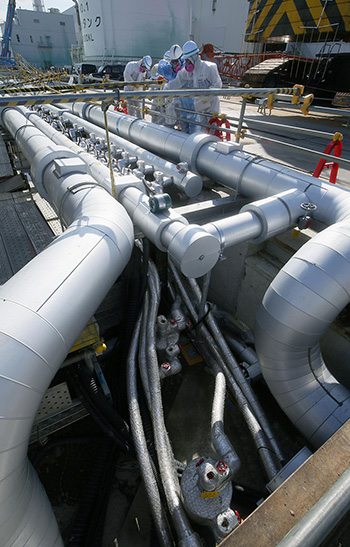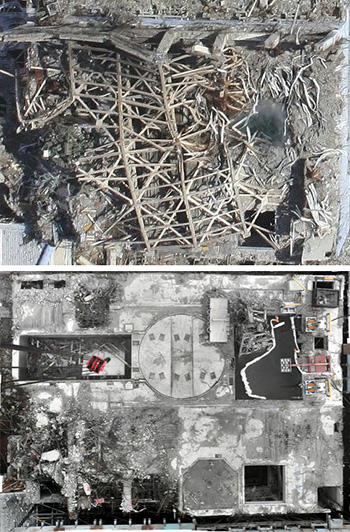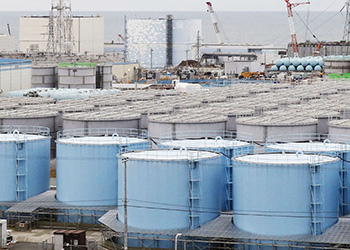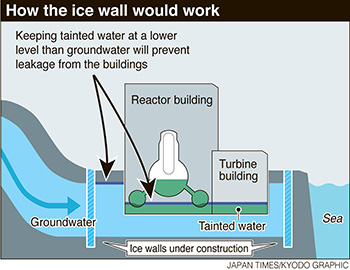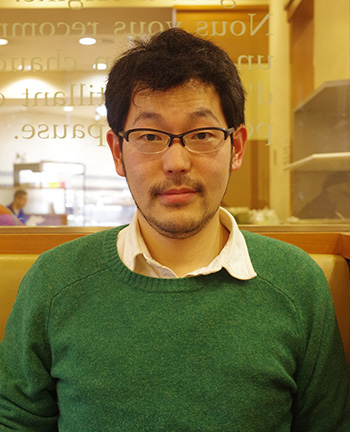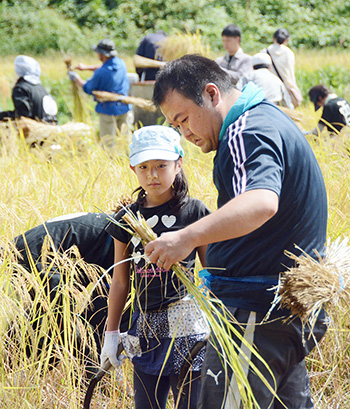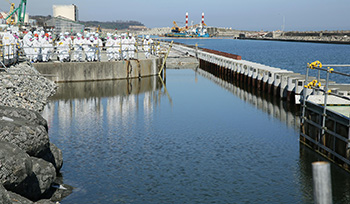Revisiting 3/11: Fukushima's long shadow
KAZUAKI NAGATA
Staff writer
It’s hard to forget the shocking TV footage of hydrogen explosions at three reactor buildings days after the massive earthquake and tsunami struck the Fukushima No. 1 nuclear plant in March 2011, resulting in a triple core meltdown and the world’s worst nuclear crisis since Chernobyl.
That was the beginning of Tokyo Electric Power Co.’s long struggle to contain radioactive material spilling outside its damaged reactors, whose dangerous decommissioning will take decades to complete.
Five years on, Tepco has cleaned up some of the debris and decontaminated the site somewhat in an effort to improve the working conditions of the thousands of workers there.
But the reactor decommissioning is still in an early stage, delayed due in part to Tepco’s struggle to contain the tons of groundwater tainted with radioactive material on a daily basis.
“It’s difficult to say how far we have come with the decommissioning. But if the mountain (peak) is 100 percent, I think we have climbed about 10 percent,” Akira Ono, chief of the Fukushima No. 1 plant, said last month.
Progress has been made, albeit at a snail’s pace. About 1,500 spent and unused fuel assemblies were removed from a pool in the building housing the crippled reactor 4 in 2014 — a milestone in the decommissioning process. The next big step will be for Tepco to remove spent-fuel rods from the reactor 3 building in about two years.
Improving the workplace environment will also help speed up the process.
To cater to some 7,000 people who work at Fukushima No. 1 each day, Tepco has constructed a facility where they can rest and have hot meals.
The decontamination efforts at the plant has allowed workers to switch to half-face masks from full-faced ones that are uncomfortable and harder to speak through. Now, full-faced masks are only required when working at sites, such as near reactor buildings, where radiation levels are still high.
Securing enough workers is also a challenge for Tepco. But Ono played down the concern.
“The decommissioning task is a new business. There are many new things to develop for the work, so I think this is a business that has a future,” said Ono.
For now, the pressing task for Tepco is to reduce the increasing amount of radioactive water — groundwater flowing from the mountains into the damaged basements of the reactor buildings, resulting in contaminated water.
The basement floors of the buildings housing reactors 1, 2, 3 and 4 are flooded with radioactive water generated in the process of cooling the damaged reactors. The buildings apparently have cracks where groundwater finds its way in and mixes with the tainted water.
The issue has forced the utility to build an unprecedented underground ice wall to block groundwater going into the basements of the reactor buildings. The government-backed project, which cost ¥35 billion, involves encircling the buildings with the frozen wall by freezing the soil.
If it works, Tepco may be able to achieve its goal in stopping the leakage by 2020. The ice wall technology has been used in other construction projects, but the 1.5-km wall planned for the Fukushima plant is unprecedented.
“The increase of the contaminated water has been a major issue. Even though Tepco is now pumping groundwater from the wells . . . quite a lot . . . is still going into the reactor buildings. In that sense, the ice wall could be effective,” said Kiyoshi Takasaka, an adviser on nuclear issues to the Fukushima Prefectural Government.
At first, an estimated 400 tons of groundwater was being contaminated daily, but the amount has decreased to about 150 tons after Tepco started pumping out groundwater and discharged it into the sea after checking radiation levels. Because rainwater seeps into the ground and increases groundwater levels in and around the plant, Tepco has also paved many areas within the site to limit this.
But if the containment fails to go as planned, radioactive water may seep into the soil around the reactor buildings, further contaminating the environment.
To date, the tainted water has remained largely inside the reactor buildings because the water level has been lower than the groundwater level outside. Since the ice wall will block the groundwater flow into the buildings, the groundwater level within the ice wall is expected to go down. However, if it becomes lower than the tainted water level, the radioactive water will escape and mix with the underground environment.
“We understand that the biggest concern is that the contaminated water might escape from the buildings. We must not let that happen,” Naohiro Masuda, who heads Tepco’s decommissioning division, said during a news conference on Feb. 25.
Masuda stressed that Tepco will be closely monitoring both water levels and if the groundwater level drops, it will add water from the wells, vowing the tainted water won’t leak “by any chance.”
And even if it leaks, he said Tepco completed the underground sea wall right by the Pacific Ocean, so the tainted groundwater will be blocked there.
“We can promise that it won’t leak to the sea,” he said.
But the Nuclear Regulation Authority, Japan’s nuclear watchdog, has been reluctant to approve Tepco’s ice wall plan. Tepco initially wanted to complete freezing the soil, which will take several months, by the end of March.
After months of explanations, the NRA is expected to green-light the plan soon.
Takasaka, who is a member of an NRA panel monitoring the situation at the Fukushima plant, admits Tepco’s explanation is becoming more convincing but there is no guarantee the tainted water won’t leak.
And if it does, Tepco will face a challenging task of collecting and disposing of radioactive soil, Takasaka claims.
“The underground sea wall will prevent the contamination from spreading into the Pacific. But a massive amount of soil will be tainted and has to be disposed of at some point,” he said.
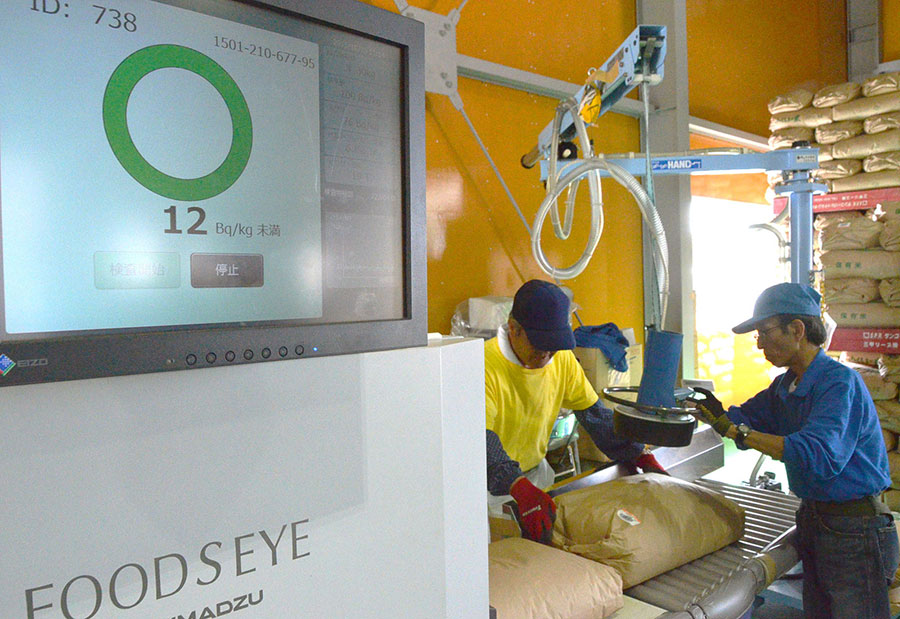
Fukushima researcher says region still ‘stigmatized’ by 2011 disaster
REIJI YOSHIDA
Staff writer
Hiroshi Kainuma thinks a lot about Fukushima. He’s written a number of books and held hundreds of lectures on the crisis since 2012, but these days, he’s concerned with the public’s perception of his hometown.
Kainuma is a sociologist, born in Iwaki, Fukushima Prefecture, a city located about 30 km south of the crippled Fukushima No. 1 nuclear power plant.
During more than 200 lectures he’s interacted with thousands of people, giving him an insight into what they think, and perhaps more telling, how they feel, about the prefecture and its people.
Most, he’s convinced, are operating under an exaggerated stereotype of Fukushima Prefecture, one that in some cases has led to stigmatization of its residents.
“There is always a perception gap between those who look out from and those who look into any given place,” Kainuma said during a recent interview with The Japan Times.
“But I have become convinced that in some cases (this perception gap) has caused false rumors and discrimination.”
Before beginning his presentations, Kainuma often hands out an audience questionnaire. One key question is: How much of Fukushima’s population do you think fled the prefecture after the nuclear crisis?
“In most cases, the answers I get are wrong,” he said.
The average answer is about 20 to 30 percent, reflecting a widespread perception of a massive exodus from contaminated areas around the Fukushima power plant.
But in reality, only 2.2 percent of the prefecture’s 1.9 million people were still living outside it as of December last year.
Fukushima’s population shrank 5.7 percent between 2010 and 2015. A decline of this size, however, can also be seen in other prefectures, where it is chalked up to a low birth rate and an increase in deaths among the large cohort of elderly people, Kainuma said.
For example, according to the 2015 census survey, Akita Prefecture saw a 5.8 percent decline in its population during the same period.
Despite this, Kainuma holds that pundits, activists and media outlets outside Fukushima — including foreign journalists — consistently mine certain themes in their coverage: radiation, evacuation, compensation, decontamination, anxious children and the nuclear industry.
“Now, a majority of ordinary people (outside Fukushima) have become indifferent to such topics. But others have become isolated and ever more radical,” Kainuma said.”Such people want to believe unfounded rumors” about the threat of radiation, he added.
He said life was still hard for many natives of Fukushima five years after the disaster, especially for those who evacuated and still lived away from their hometowns.
But everyday life in Fukushima “has become rather normal” for many residents, although most media stories do not focus on such “boring” topics, Kainuma said.
Shortly after the 3/11 crisis, Kainuma became a star sociologist when he coincidentally published a book analyzing how local communities in Fukushima have embraced the nuclear industry since long before the meltdown disasters.
In the wake of the crisis, some people outside Fukushima began stigmatizing the area and its residents, exaggerating the radiation threat and speaking against farmers who sold their rice and vegetables elsewhere, Kainuma said.
Last year he published another book titled “Hajimete no Fukushima Gaku” (“Fukushima Studies for Beginners”), which discussed basic facts and figures in plain language.
One topic he addressed in the book, and a question he regularly asks his audiences, is how many bags of Fukushima rice are found to contain radioactive particles in excess of the legal limit?
Presently all Fukushima-grown rice that is for sale, about 10 million bags a year, is required to undergo radiation checks before shipment.
Yet not one of those bags were found to exceed the legal safety limit last year, Kainuma pointed out, a fact he believed was contrary to the impressions of many people outside the prefecture.
He said of course there are those who distrust the radiation limit, which after all was set by the Japanese government, an entity the public has found less and less trustworthy as the crisis drags on.
But Japan’s safety limit for general foodstuffs, 100 becquerels per kilogram of radioactive cesium, is actually more than 10 times stricter than that of the European Union, which has a limit of 1,250 becquerels per kilogram, and that of the United States, which is 1,200 becquerels per kilogram, Kainuma noted.
In general, mainstream scientists agree that radiation exposure from the Fukushima fallout, including human internal exposure from ingested food products, is very small and unlikely to cause a cancer spike in the prefecture.
For example, the United Nations Scientific Committee on the Effects of Atomic Radiation (UNSCEAR) has concluded that it does not expect “significant changes” in future cancer rates that could be attributed to radiation exposure from the reactor meltdowns.
The recent detection of higher rates of thyroid cancer among some children was probably “a consequence of intensive screening and highly sensitive nature of the equipment being used,” UNSCEAR also said in its 2015 report on the Fukushima disaster.
Kainuma argued that Fukushima-related topics have been “excessively politicized,” meaning they are now very difficult to discuss for experts and laymen alike.
The situation is such that many radical anti-nuclear activists and even some ordinary people reject basic facts and scientific discussion on radiation, and accuse experts — including Kainuma himself — who try to explain the relative safety of the food and environment of Fukushima Prefecture, he said.
In the face of strong accusations from such people, many radiation experts have simply given up discussing Fukushima-related issues outside of their academic communities, Kainuma said.
“It’s quite important to present facts in a fair manner. Some people want to prioritize their opinions over facts, and place justice over fairness, which often skews the discussion,” Kainuma said.
The problem is compounded by the fact that Fukushima-related topics, and radiation in particular, are “excessively scientific” and difficult for laymen to understand, Kainuma argued.
A simple online search can reveal a torrent of information on the alleged dangers of fallout from the Fukushima disaster. But much of it is so fragmented and technical that it’s difficult for ordinary people to verify, meaning it’s hard to know what to believe, Kainuma said.
“There’s plenty of information, but much of it has not yet been digested into meaningful ‘knowledge.’ That’s a problem,” he added.
For this reason, he argued, the role of people who can explain technical data pertaining to the Fukushima disaster in a plain, easy to understand manner becomes more important than ever, so that people’s feelings about the issue can be more in line with the facts on the ground.
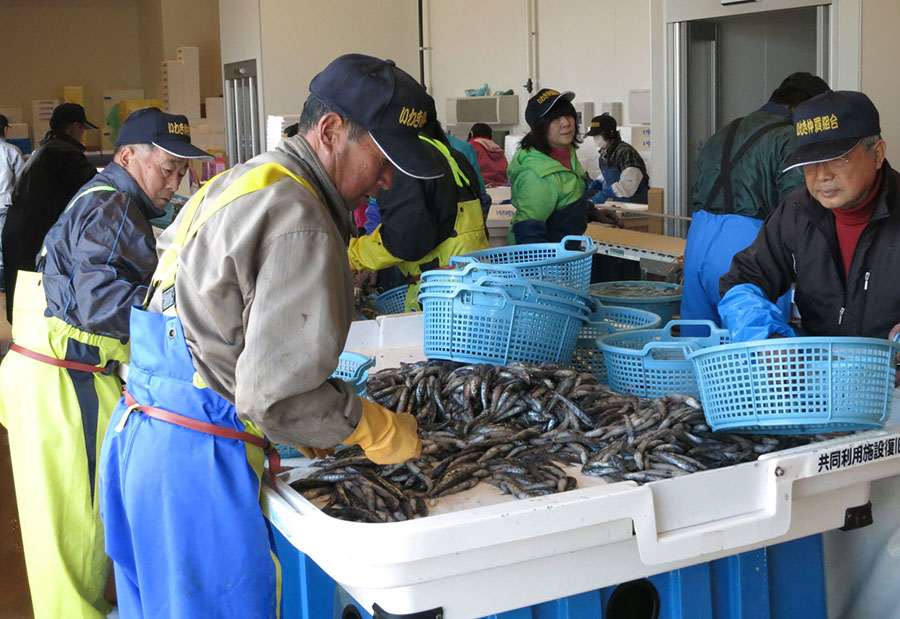
Catch limits, safety worries take toll on Fukushima fishery
KAZUAKI NAGATA
Staff writer
IWAKI, FUKUSHIMA PREF. — Over the past five years, fishermen in the disaster-struck regions of Miyagi and Iwate prefectures have revived their industry, steadily increasing the catch and shipment of oysters, seaweed and other local specialties.
But for the fishing industry in Fukushima Prefecture, the turnaround has been slow, and plagued by the impact of the nuclear disaster that caused massive amounts of radioactive water to flow to the Pacific Ocean.
“I think we are making some progress. The fishermen couldn’t fish for more than a year (after 3/11),” said Yoshihisa Komatsu, deputy director of administration at the Fukushima Prefectural Federation of Fisheries Cooperative Associations. But the speed of the progress “is slow, as it’s been already five years,” he said.
Recovery for Fukushima’s fishing industry has come in small steps. After March 11, 2011, fishermen voluntarily stopped fishing. They resumed in June 2012, although only on a trial basis, and the government slapped an outright ban on the sale of certain species deemed likely to be radioactive.
The blacklist affected more than 35 types of fish caught off the Fukushima coast, which was famous for flounder, angler fish and rockfish.
Under the trial, fishing boats were allowed to catch a small amount of other species but were required to check their radiation levels. If the fish were found to be uncontaminated, they were shipped off to market.
The goal is to see the reaction of consumers, who have largely avoided eating fish from the prefecture due to radiation worries.
The catch has significantly gone down in Fukushima, with only about 5,600 tons of fish caught in 2015, down from about 38,600 tons before 3/11.
To increase the catch, Komatsu said it was essential to lift the shipping ban.
“We can make the first step (toward full recovery) once the ban is lifted from all fish,” said Komatsu.
While the sales ban on several species has been lifted, 28 kinds of fish remain on the list.
Trial fishing, meanwhile, has been expanded from three species to 72.
In addition, radiation-contaminated fish have drastically decreased.
According to the prefecture, about 50 percent of the fish samples tested for radiation levels exceeded the government-designated maximum of 100 becquerels per kilogram right after the nuclear disaster started in 2011. But after April 2015, no fish has exceeded that limit.
As a result, the Fukushima fisheries cooperative federation is now looking to expand the permissible fishing area closer to the Fukushima No. 1 plant.
Currently, fishermen can only fish outside of a 20-km radius of the plant. They want to expand this to a 10-km radius after Tokyo Electric Power Co. last October completed a sea wall that blocks contaminated groundwater from reaching the Pacific. Since then, the level of contamination near the plant has decreased.
While many take this as a positive sign toward recovery, concerns remain.
“If some fish show high levels of contamination, it could hurt efforts to fight the harmful rumors” about the safety of products from the area, Komatsu said.
Fukushima has suffered from a tainted image due to the Fukushima nuclear plant calamity, affecting everything from farm to marine products — something the prefecture has constantly been fighting.
“The harmful rumors need to end to some degree before the trial fishing ends and full-scale fishing resumes,” said Hiromitsu Endo, who represents distributor in Iwaki, Fukushima Prefecture.
Currently, his association of 28 distributors sell fish caught under the trial to the market.
But once fishing returns to full scale, the association will be disbanded, with each firm left on their own to sell their catch to customers. If the bad image remains, they fear they will have a hard time.
“It will be too late to start fighting the harmful rumors then,” Endo said.
Even five years after the disaster started, the harmful rumors persist, he said.
Although Fukushima Prefecture monitors radiation levels of fish, shipping only products that are not contaminated, distributors said some stores were reluctant to market the products because they didn’t sell well.
To wipe out the bad image, Komatsu of Fukushima fisheries cooperative said the industry needed to keep proving through trial fishing that the fish being sold was safe.
Related links:
- Revisiting 3/11: Five years after the 2011 Tohoku earthquake
- Documenting Tohoku's long road to recovery
- Five years on, Fukushima evacuees voice lingering anger, fear and distrust
- Immigration: the missing piece in the Tohoku recovery puzzle?
- Looking for comfort in art following the Great East Japan Earthquake
- Needs of post-3/11 Tohoku stay in focus for filmmakers
Follow The Japan Times
Stay in touch with us on the social media links below
